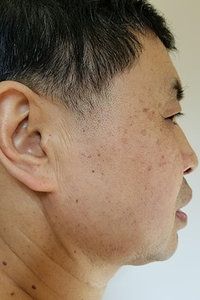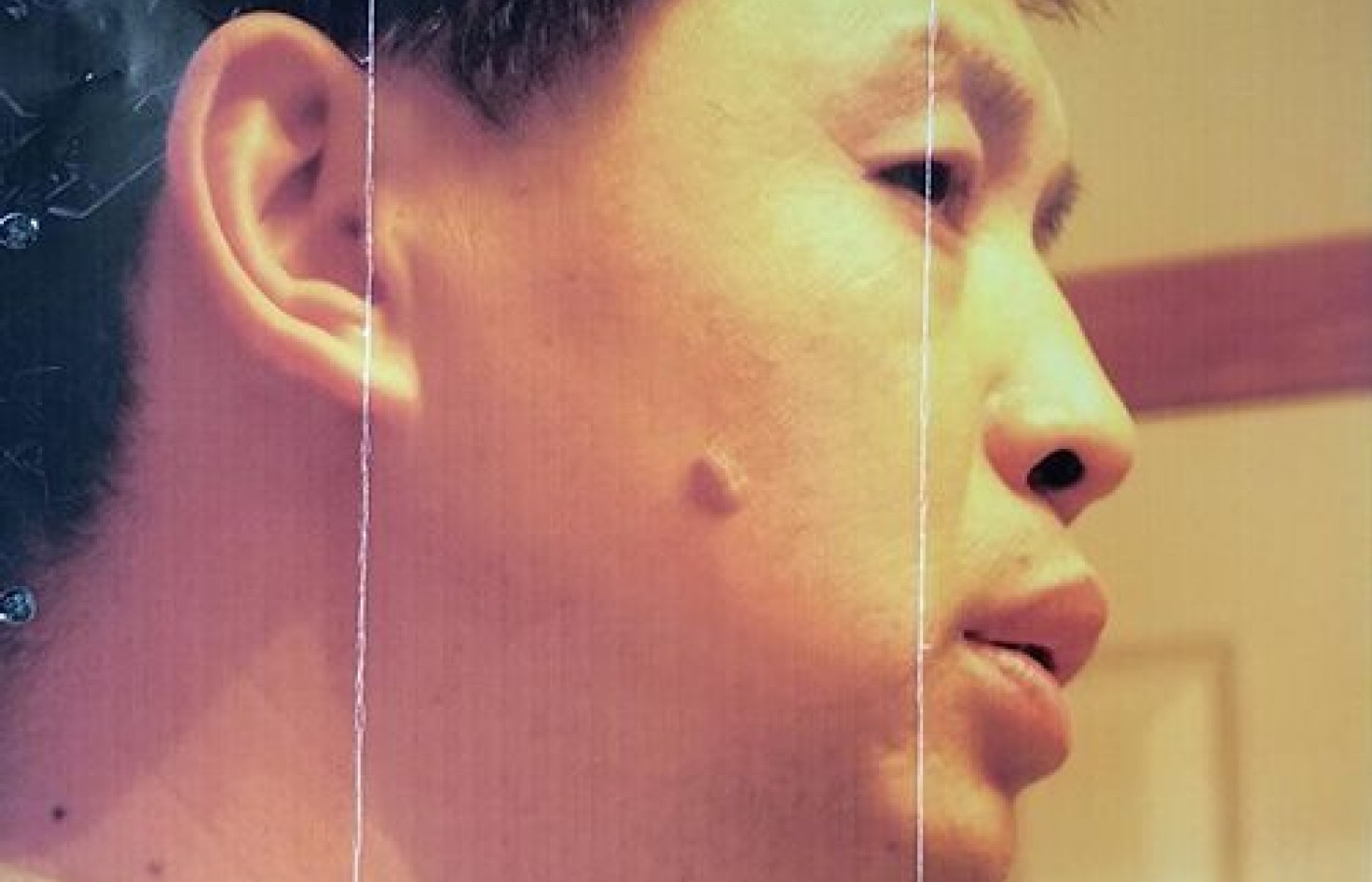One of the longest nerves in the body is known as the vagus nerve (VN). The VN is the 10th pair of cranial nerves that originates at the brain stem in the medulla oblongata. This nerve is part of the parasympathetic nervous system, which is a part of the ANS. Research suggests ear acupuncture can activate the VN.
Successful Treatment of a Facial Dermatolgic Lesion: A Case Study With a 10-Year Follow-up
In January of 2007, a 51-year old male began to notice the rapid growth of a facial dermatological lesion on the right side of his face. The initial skin lesion was flat in appearance and approximately a needle size in diameter. However, within the span of a month, the lesion became oval in shape, grown in diameter by approximately .25mm/week, and had an elevated border that gave it a tumor-like appearance. Dark in color, the lesion measured to become 6mm x 8mm before any treatment. Texture wise, the lesion became uneven with small cracking on the side and asymmetrical in shape. The patient reported irritation and an itching pain sensation.
The Treatment—Herbs and Acupuncture
Based on primary morphological categorization, three possibilities of the skin lesion diagnosis could have been: 1) seborrheic keratosis 2) mole 3) pathological skin cancer. There are various types of tumors depending on the shape and kind of tissue the lesion arises in. Dermatological treatments include, but are not limited to, cryosurgery, surgical excision, curettage, and radiotherapy.1
In seeking alternative treatment methods, acupuncture and herbal medicine presented a more natural approach to healing. Identifying a pattern of disharmony along the meridians of the body, acupuncture addresses this energy imbalance through insertion of needles at these points to a restore the natural flow of the body with the environment.2
In starting acupuncture treatment on his face, hand, and body, the patient also started using plasters of natural herbs. The herbal plaster had green tea powder, garlic oil, olive oil, salt, vinegar, smashed seaweed, and multizyme Cholaplex. He applied this daily on his face before bed and left it until the next morning to clean up and did this for four months.

These plasters also included a concoction of vinegar, salt, garlic, aloe vera powder, egg white, and seaweed wrap. The addition of the egg white and seaweed were for adhesive purposes. The wrap did not have any interference with the patient's daily life and was changed three times daily. Tea tree oil was initially a component of the concoction, but due to allergic reactions, was taken out.
The needle points—he used #36 face needle to points: SI 18, Quan Liao, S6 Jiache, S7 Xiaguan, LI4 Hegu Plus 2-4 surrounding local points. Two to three of the aforementioned points were done each day for 2-4 months.
A Successful Outcome
By the first appointment with the dermatologist in April 2007, the lesion had stopped growing and had actually shrunk. In continuing the same usage of this treatment over the next two months, the lesion continued to shrink in size and the raised portion became flat. The lesion eventually became darker, but eventually disappeared.
This case report shows that the growth of a facial skin lesion was stopped purely through integrative treatments of acupuncture and local herb use. Furthermore, the lesion disappeared and the skin healed normally without scar formation. As of the past decade and ongoing, there has been no regrowth of the lesion. This observational study of acupuncture along with integrated usage of herbs for skin lesion treatments demonstrates a possible noninvasive treatment method without ingesting drugs or surgical removal.
References
- Page EH. Description of Skin Lesions. Merck Manual, 2016.
- Liangyue D, et al. Chinese acupuncture and moxibustion. Traditional Medicine in Asia, 2001.



